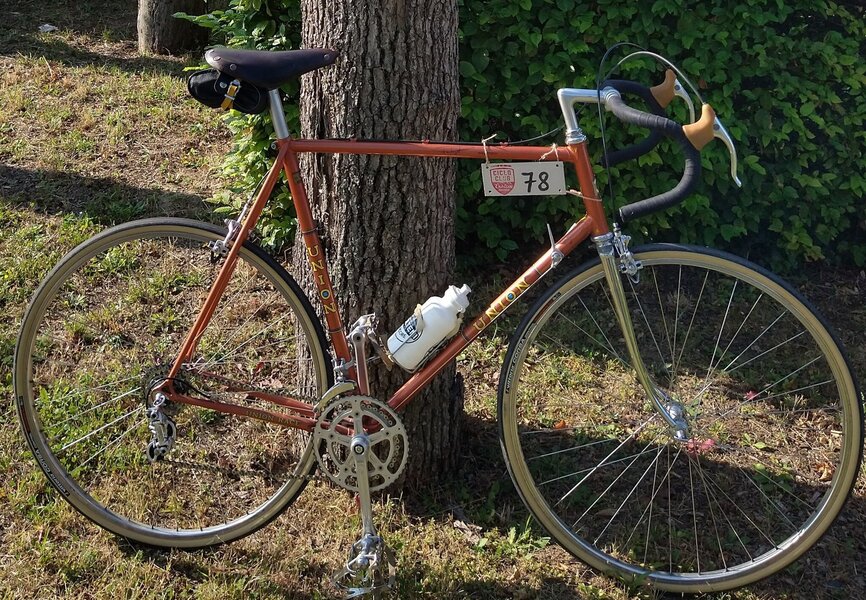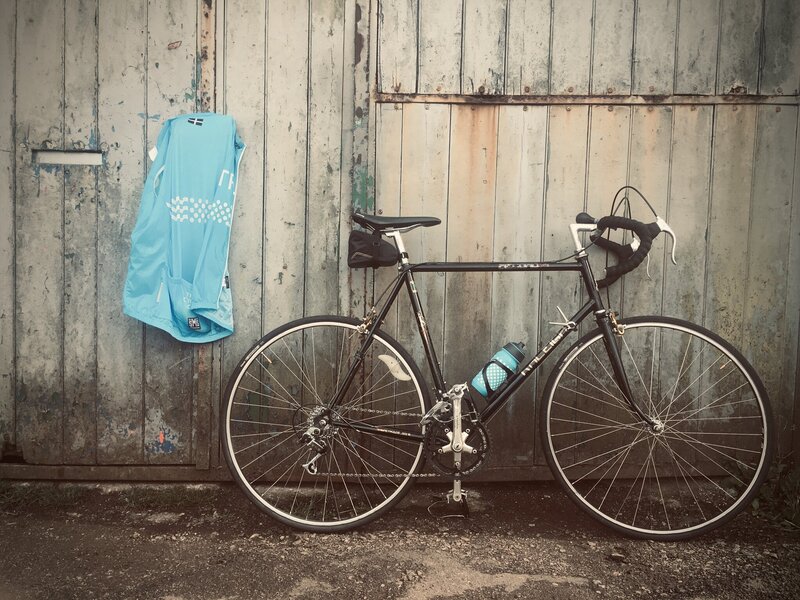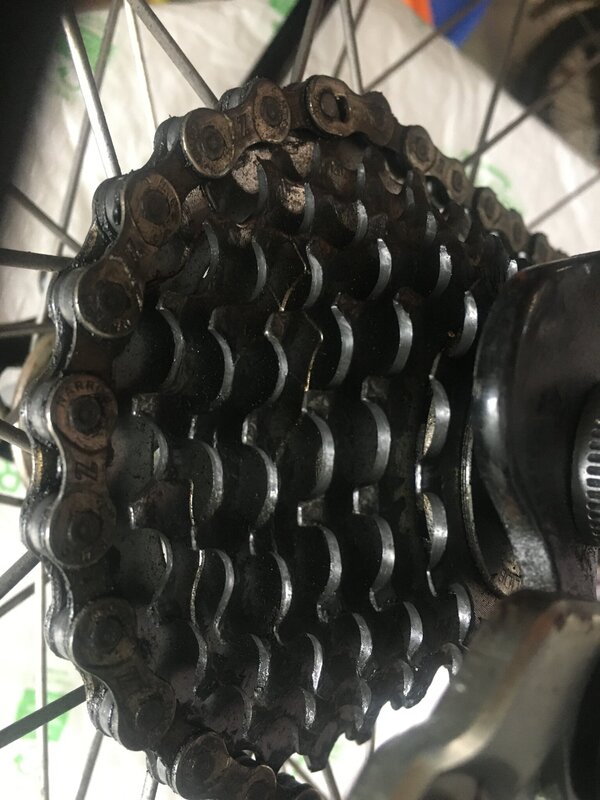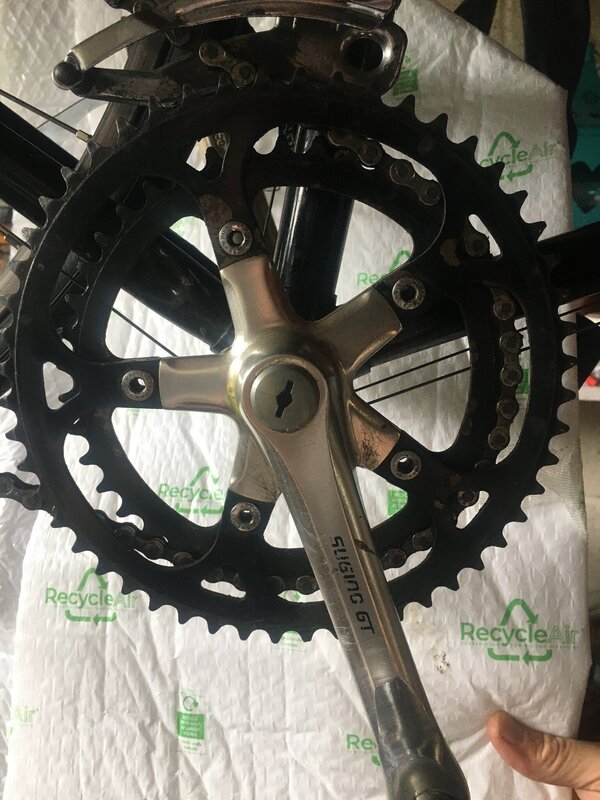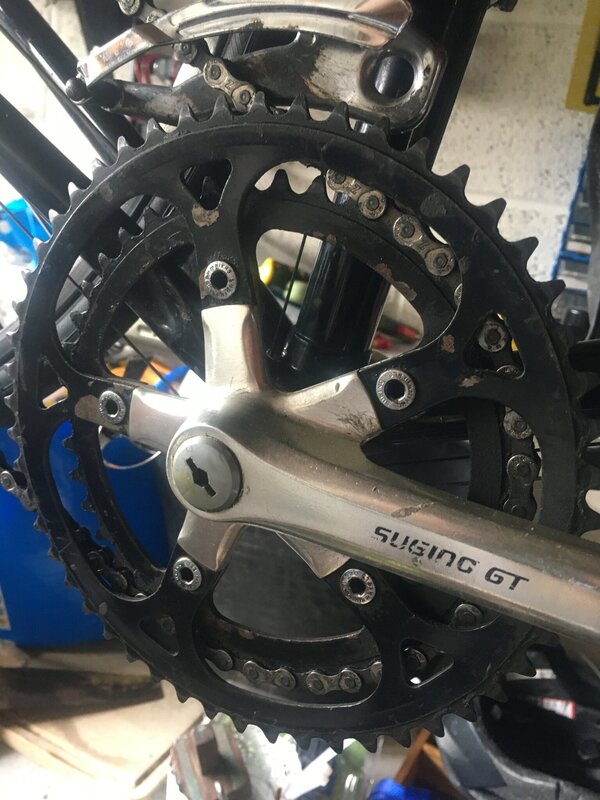non-fixie
Senior Retro Guru
I realise we haven't exactly answered the OP's question.
7-speed freewheels were introduced by SunTour in the late seventies, but since they led to extra strain on the surrounding hardware, i.e. spokes and axles, they never became popular with racers. Only when cassette hubs appeared 7-speed gained traction in the market. Expect pre-1985 examples to be fairly rare.
For a 21-speed transmission you need a triple up front, and those weren't generally found OEM on racing machines either.
Early eighties racing machines that did come with 7-speed blocks were invariably equipped with Shimano, which means Uniglide hubs, for which larger cogs can be hard to find, and 130mm BCD cranks. The latter means the smallest chain ring you can fit is a 38T.
So, here's the earliest Koga-Miyata I could find with 7-speed: the 1983 FullPro:
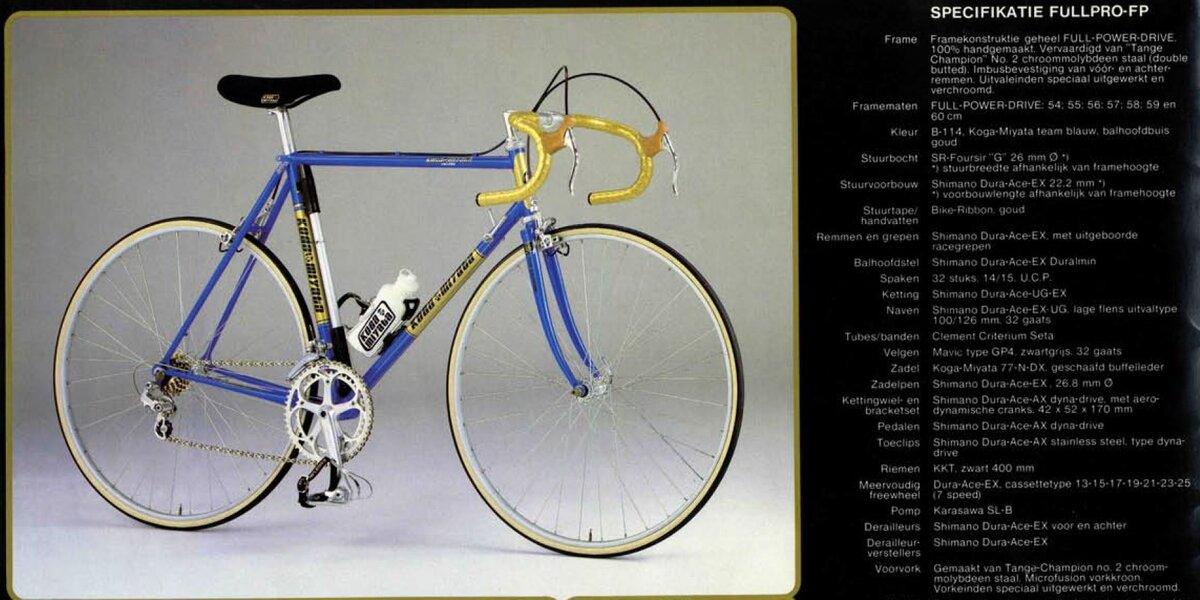
7-speed freewheels were introduced by SunTour in the late seventies, but since they led to extra strain on the surrounding hardware, i.e. spokes and axles, they never became popular with racers. Only when cassette hubs appeared 7-speed gained traction in the market. Expect pre-1985 examples to be fairly rare.
For a 21-speed transmission you need a triple up front, and those weren't generally found OEM on racing machines either.
Early eighties racing machines that did come with 7-speed blocks were invariably equipped with Shimano, which means Uniglide hubs, for which larger cogs can be hard to find, and 130mm BCD cranks. The latter means the smallest chain ring you can fit is a 38T.
So, here's the earliest Koga-Miyata I could find with 7-speed: the 1983 FullPro:

